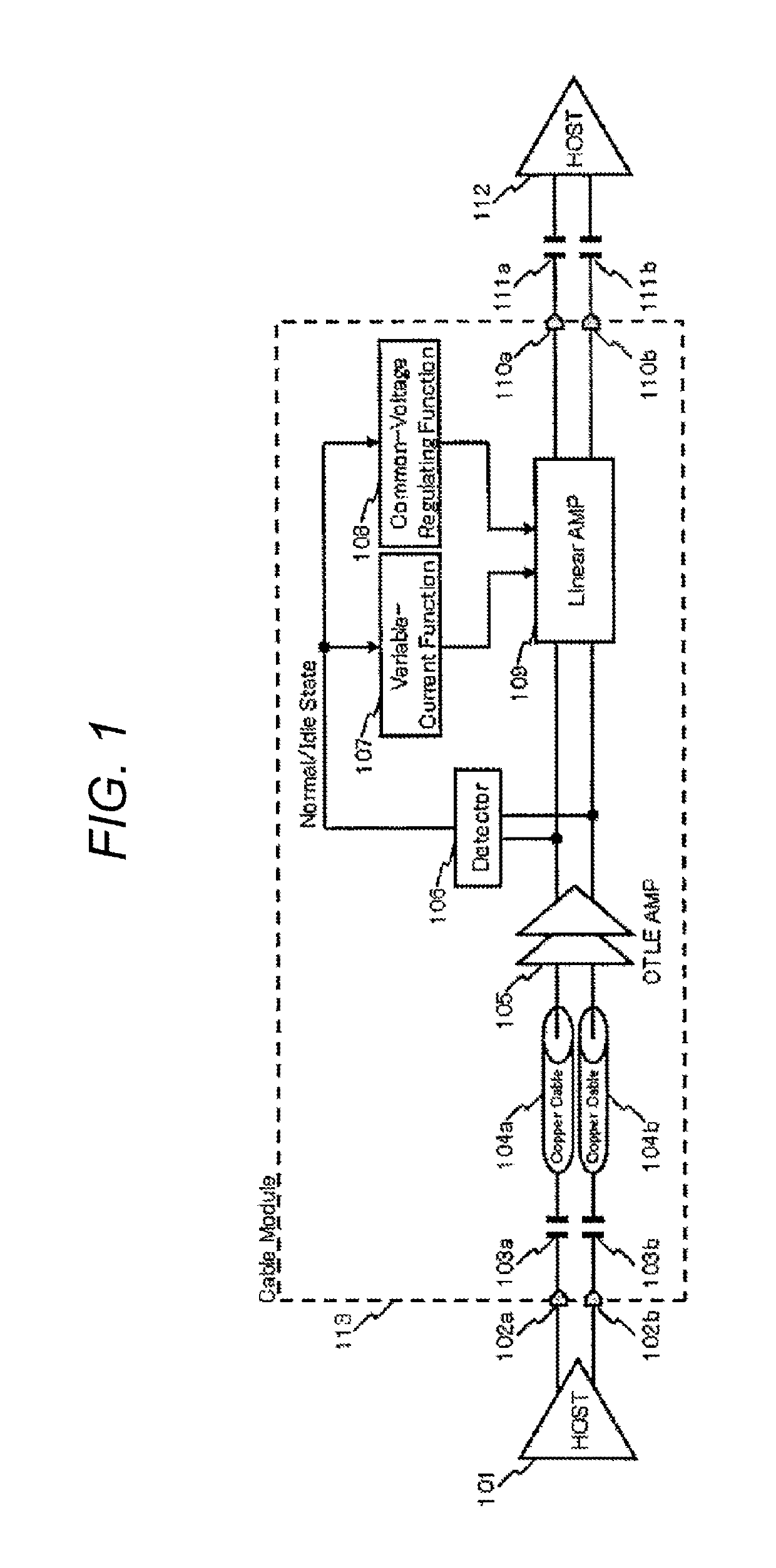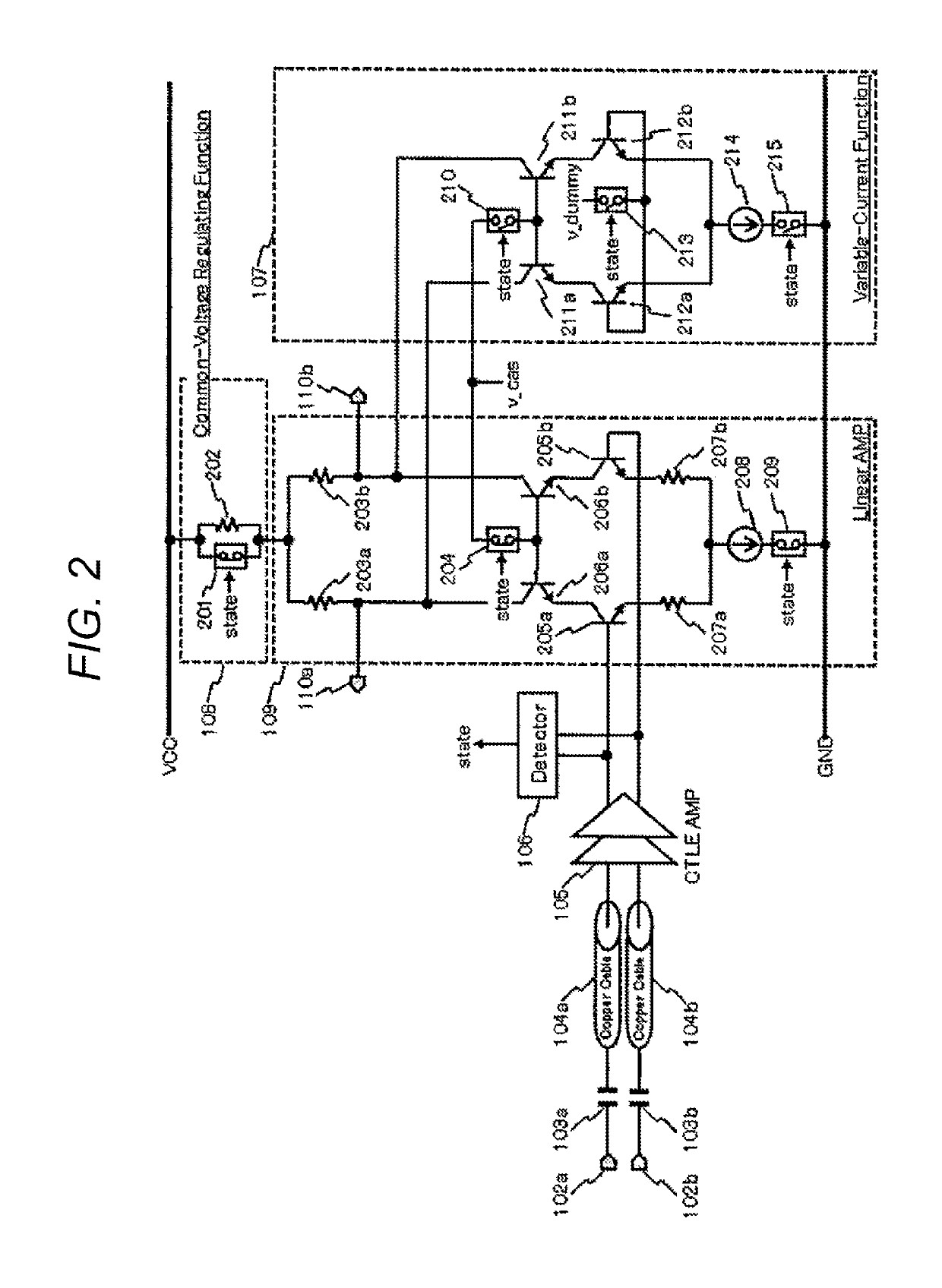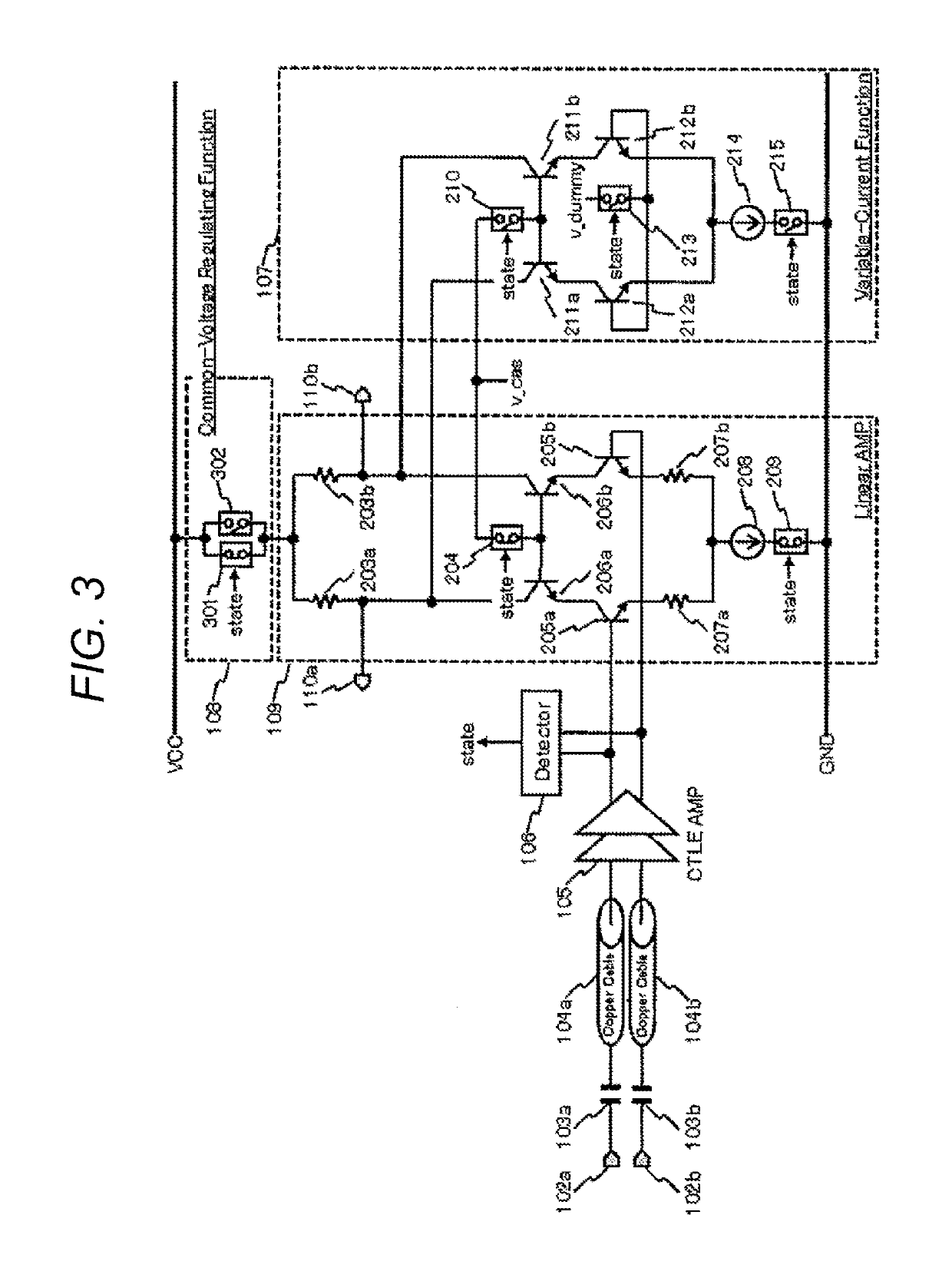Communication cable module and transmission loss compensation circuit
a technology of loss compensation circuit and communication cable, which is applied in the direction of transmission, digital transmission, baseband system details, etc., can solve the problems of fluctuation of cross-talk between transmission cables, affecting the transmission speed of the host, and affecting the transmission speed
- Summary
- Abstract
- Description
- Claims
- Application Information
AI Technical Summary
Benefits of technology
Problems solved by technology
Method used
Image
Examples
first embodiment
[0019]A first embodiment of the present invention will be described with reference to FIG. 1. A communication cable module 113 shown in FIG. 1 is an ACC and includes input terminals 102a and 102b, AC coupling capacitors 103a and 103b, copper cables 104a and 104b, a CTLE amplifier 105, a detector 106, a variable-current function 107, a common-voltage regulating function 108, a linear amplifier 109, and output terminals 110a and 110b. The communication cable module 113 is inserted between a transmission host IC 101 and AC coupling capacitors 111a and 111b as well as a reception host IC 112, and is used as a communication cable module for mediating communication between the host ICs.
[0020]The differential signal transmitted from the transmission host IC 101 is input into the cable module from the input terminals 102a and 102b, and thereafter, the signal is input into the copper cables 104a and 104b via the AC coupling capacitors 103a and 103b for dividing the operating voltage of the t...
second embodiment
[0031]The second embodiment of the present invention will be described with reference to FIG. 2. The communication cable module shown in FIG. 2 is an ACC, and includes the input terminals 102a and 102b, the AC coupling capacitors 103a and 103b, the copper cables 104a and 104b, the CTLE amplifier 105, the detector 106, the variable-current function 107, the common-voltage regulating function 108, the linear amplifier 109, and the output terminals 110a and 110b.
[0032]The linear amplifier 109 is a general differential cascode amplifier and includes resistors 203a, 203b, 207a and 207b, switches 204 and 209, amplifying transistors 205a and 205b, cascode transistors 206a and 206b, and a current source 208. The output of the CTLE amplifier 105 is input into the bases of the amplifying transistors 205a and 205b. The amplifying transistors 205a and 205b are connected to the resistors 207a and 207b for improving the linearity on the emitter side. The resistors 207a and 207b are connected to ...
third embodiment
[0045]A third embodiment of the present invention will be described with reference to FIG. 3. The communication cable module shown in FIG. 3 is an ACC and is the same as that of the second embodiment in FIG. 2 except for the configuration of the common-voltage regulating function 108.
[0046]The common-voltage regulating function 108 in the third embodiment is constituted by connecting switches 301 and 302 in parallel. The switch 301 is composed of, for example, a large-size PMOS transistor with a small on-resistance. On the other hand, the switch 302 is composed of a small-size PMOS transistor with a large on-resistance. Hence, if the resistor 202 of the second embodiment is assumed to be the switch 302, the circuits can be regarded as the same circuits. As for the control of each switch, the switches 301, 204, and 209 are turned on and the switches 302, 210, 213, and 215 are turned off at the normal time. The switches 301, 204, and 209 are turned off, and the switches 302, 210, 213,...
PUM
 Login to View More
Login to View More Abstract
Description
Claims
Application Information
 Login to View More
Login to View More - R&D
- Intellectual Property
- Life Sciences
- Materials
- Tech Scout
- Unparalleled Data Quality
- Higher Quality Content
- 60% Fewer Hallucinations
Browse by: Latest US Patents, China's latest patents, Technical Efficacy Thesaurus, Application Domain, Technology Topic, Popular Technical Reports.
© 2025 PatSnap. All rights reserved.Legal|Privacy policy|Modern Slavery Act Transparency Statement|Sitemap|About US| Contact US: help@patsnap.com



